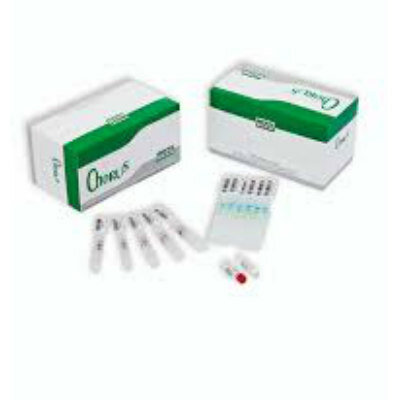Novel Drug Cures Toxoplasmosis in Mouse Model
By LabMedica International staff writers
Posted on 27 Aug 2012
A novel, hi-tech drug that combines an antisense oligomer with a peptide able to penetrate most kinds of cell and nuclear membranes was found to dramatically lower the burden of Toxoplasma gondii parasites in a mouse model.Posted on 27 Aug 2012
T. gondii is one of the most common human parasites, infecting as many as two billion people worldwide. The parasite can cause serious disease in those with immature or compromised immune systems, particularly those infected in utero. Existing treatments have associated toxicities and hypersensitivity and do not eliminate the latent form of the parasite.
Investigators at the University of Chicago (IL, USA) recently applied a genomic approach used to cure malaria in experimental animals to the treatment of T. gondii infection. This approach is based on a phosphorodiamidate morpholine oligomer (PMO), a short DNA-like molecule that binds to a specific messenger RNA, preventing it from being translated into protein. The PMO is conjugated to a transductive peptide, a small molecule that can transport the PMO across cellular, and nuclear membranes (the complex is referred to as PPMO). These peptides can enter the retina when applied topically to eyes, and cross the blood brain barrier when administered intravenously.
In the current study a PPMO specific for T. gondii’s dihydrofolate reductase (DHFR), an enzyme necessary for synthesis of folate, which the parasite requires for replication, was administered to infected mice. Results published in the August 13, 2012, online edition of the journal Proceedings of the National Academy of Sciences of the USA (PNAS) revealed that 96 hours following treatment the number of parasites was reduced by 83% to 97%, depending on the measurement technique.
"This was proof of concept," said senior author Dr. Rima McLeod, professor of ophthalmology at the University of Chicago. "We were able to cross multiple membranes, to insert the antisense strands into parasites living within cells, and prevent them from making several different proteins. We now think we can shut down any of this parasite's genes."
"This approach may even have a role in nonparasitic diseases," said Dr. McLeod. "It is currently being tested in drug-eluting stents, as a treatment for bacterial or viral infections, including Ebola, and in patients with Duchenne muscular dystrophy, where it can block production of the defective segment of a dysfunctional gene. This approach is "paradigm shifting.” It has the potential to abrogate any molecular target and underscores the variety of diseases for which such an approach might apply."
Related Links:
University of Chicago














